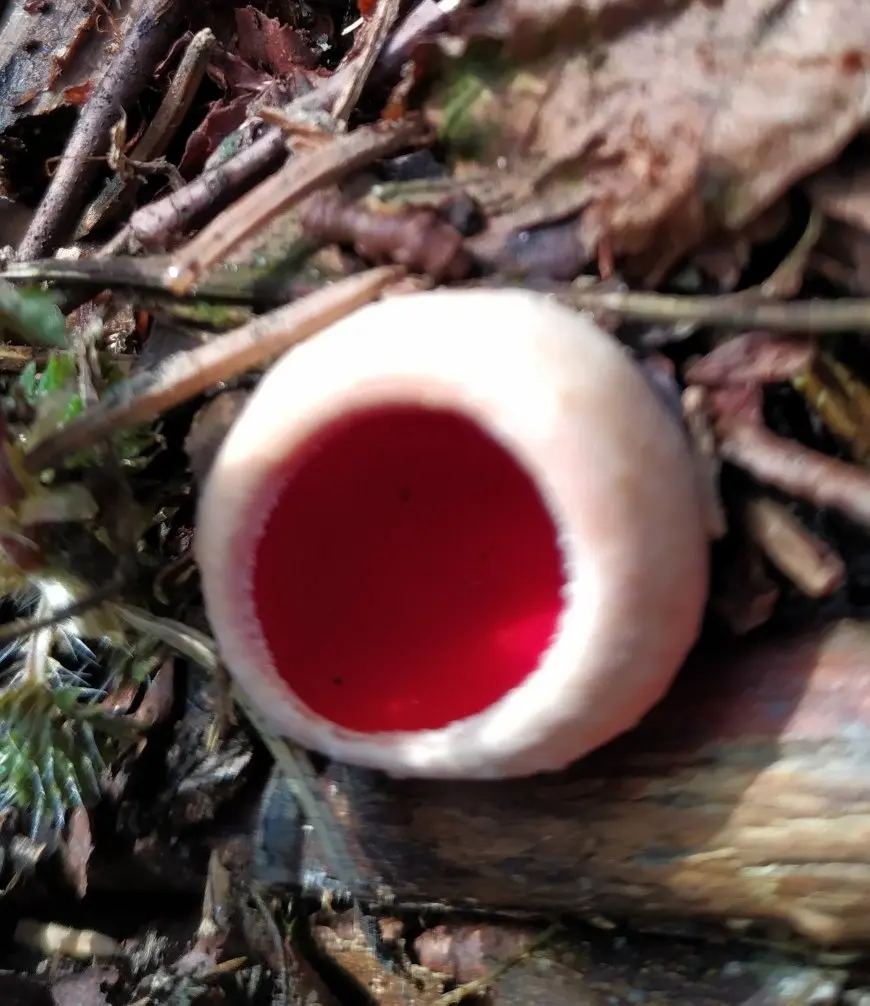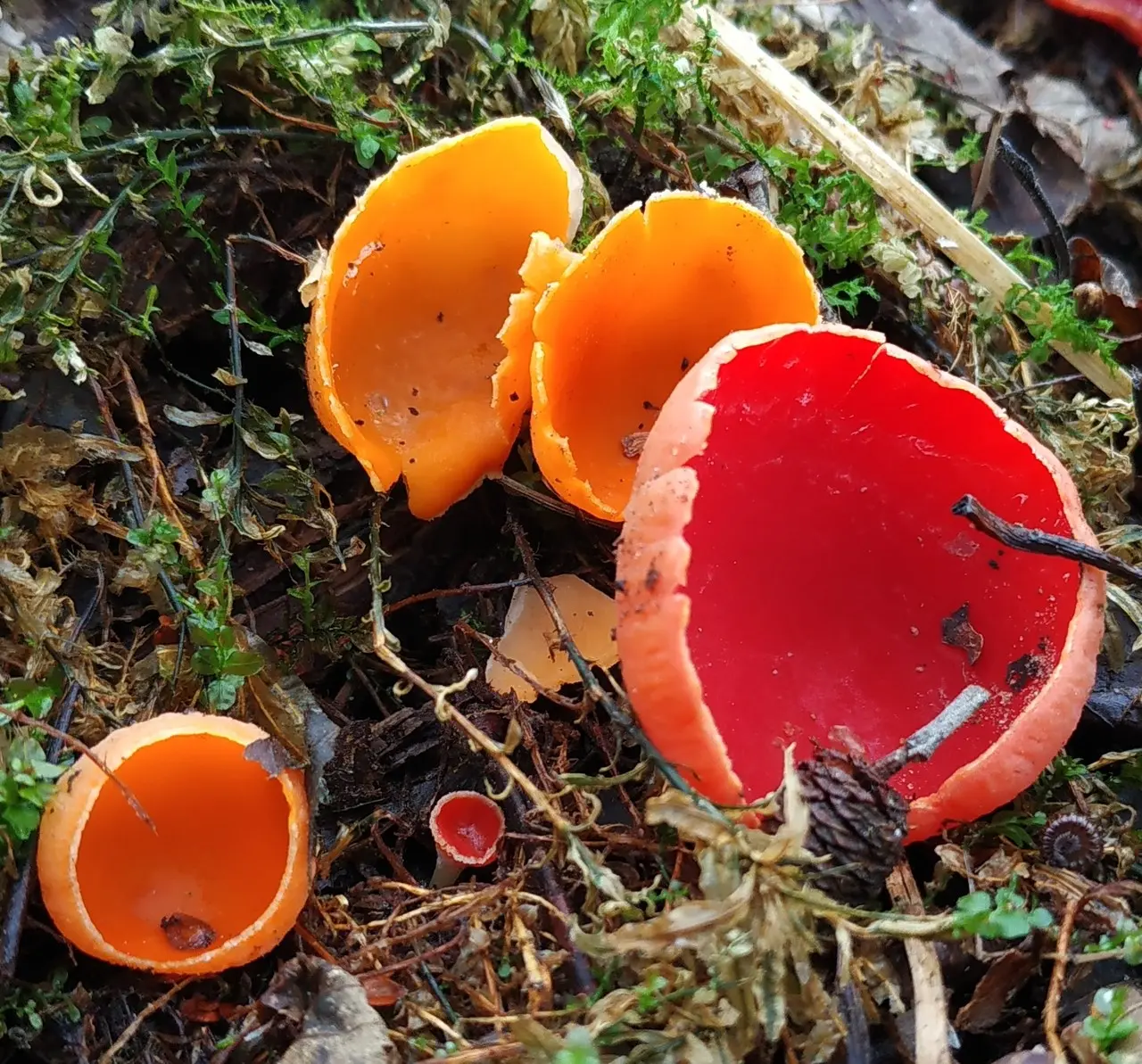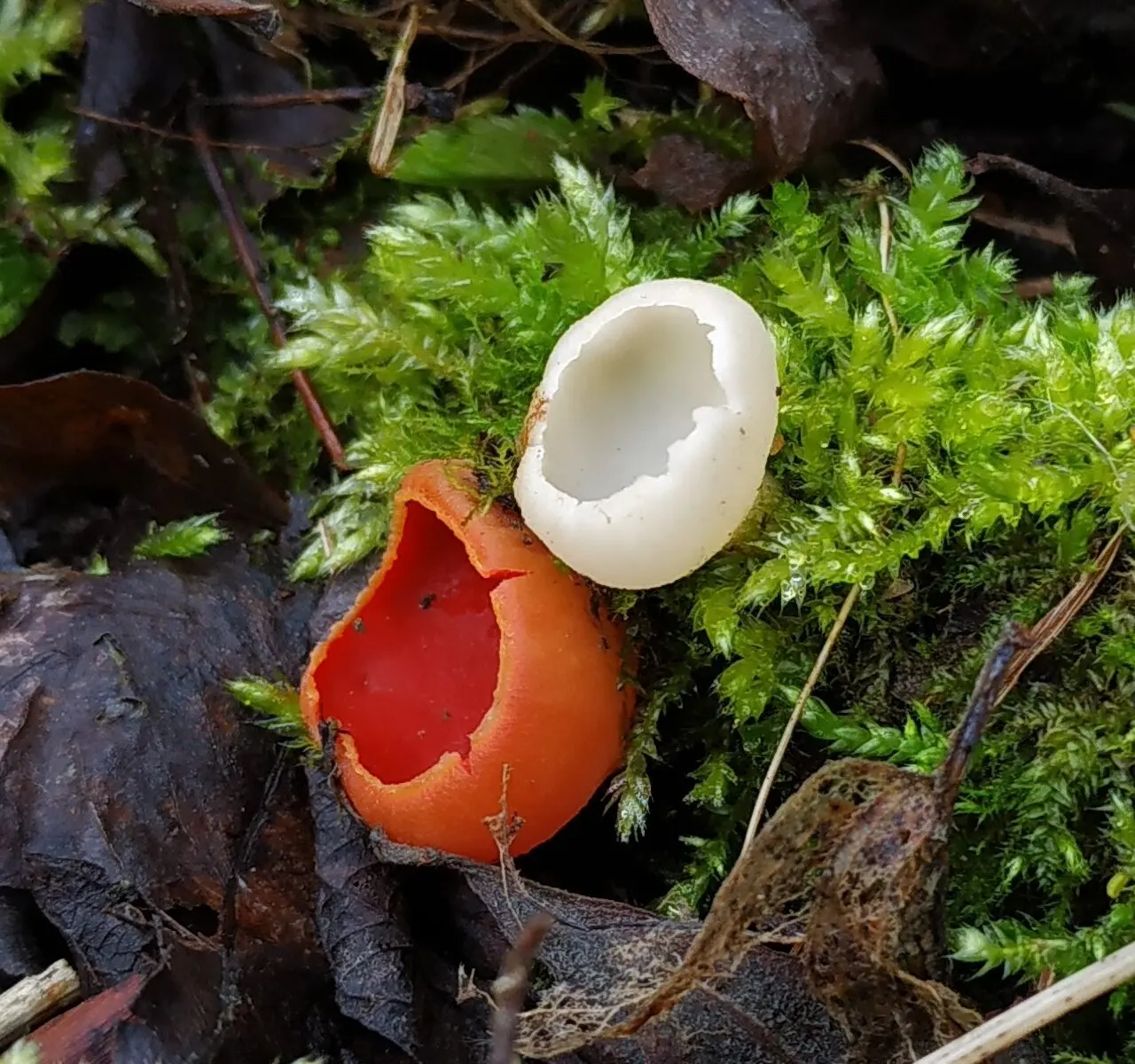Austrian Sarcoscypha (Sarcoscypha austriaca)
- Department: Ascomycota (Ascomycetes)
- Subdivision: Pezizomycotina (Pezizomycotins)
- Class: Pezizomycetes (Pezizomycetes)
- Subclass: Pezizomycetidae (Pezizomycetes)
- Order: Pezizales (Pezizales)
- Family: Sarcoscyphaceae (Sarkoscyphaceae)
- Genus: Sarcoscypha (Sarkoscypha)
- Type: Sarcoscypha austriaca (Austrian Sarcoscypha)
:
- Red elf bowl
- Austrian Peziza
- Austrian Lachnea

Fruit body: Cup-shaped when young, with paler margin turned inward, then unfolds to saucer-shaped or disc-shaped, may be irregular. Sizes from 2 to 7 centimeters in diameter.
The upper (inner) surface is scarlet, bright red, paler with age. Bald, smooth, may become wrinkled with age, especially near the central part.
The lower (outer) surface is whitish to pinkish or orange, pubescent.
The hairs are small, thin, whitish, translucent, intricately curved and twisted, and are described as “corkscrew” twisted. It is extremely difficult to see them with the naked eye; microphotography is needed to transfer them to a photo.
Leg: often either completely absent or in a rudimentary state. If there is, then small, dense. Painted like the lower surface of the fruiting body.
Pulp: dense, thin, whitish.
Smell and taste: indistinguishable or weak mushroom.
Microscopic Features
Spores 25-37 x 9,5-15 microns, ellipsoid or football-shaped (football-shaped, description – translation from an American source, we are talking about American football – translator’s note), with rounded or often flattened ends, as a rule , with many small ( Asci 8 spore.
Paraphyses are filiform, with orange-red contents.
Exipular surface with abundant hairs that are artfully curved, twisted and intertwined.
Chemical reactions: KOH and iron salts are negative on all surfaces.
Variability
Albino forms are possible. The absence of one or more pigments leads to the fact that the color of the fruiting body is not red, but orange, yellow and even white. Attempts to breed these varieties genetically have not yet led to anything (albino forms are extremely rare), so, apparently, this is still one species. There is not even a consensus on whether this is albinism or the influence of the environment. So far, mycologists have agreed that the appearance of populations of a different, non-scarlet color is not affected by the weather: such populations appear in the same places in different years. At the same time, apothecia (fruiting bodies) with normal pigmentation and with albinism can grow side by side, on the same branch.
Unique photo: red and yellow-orange forms grow side by side.

And this is the albino form, next to the red one:

Saprophyte on rotting sticks and hardwood logs. Sometimes the wood is buried in the ground, and then it seems that the mushrooms grow directly from the ground. It grows in forests, on the sides of paths or in open glades, in parks.
There are references that the fungus can grow on humus-rich soil, without being tied to wood residues, on moss, on rotten leaves or on root rot. When growing on rotting wood, it prefers willow and maple, although other deciduous trees, such as oak, are fine with it.
Early spring.
Some sources indicate that during a long autumn, the fungus can be found in late autumn, before frost, and even in winter (December).
Distributed in the northern regions of Europe and in the eastern regions of the United States.
Grows in small groups.
Just like Sarkoscifa alai, this species is a kind of indicator of “ecological cleanliness”: Sarcoscyphs do not grow in industrial regions or near highways.
The mushroom is edible. One can argue about the taste, since there is no obvious, well-defined mushroom or some kind of exotic taste. However, despite the small size of the fruiting bodies and rather thin flesh, the texture of this pulp is excellent, dense, but not rubbery. Pre-boiling is recommended to make the mushroom softer, and not to boil out any harmful substances.
There are classifications where the Austrian sarcoscif (like scarlet) are classified as inedible and even poisonous mushrooms. There are no confirmed cases of poisoning. There are also no data on the presence of toxic substances.
Scarlet Sarcoscypha (Sarcoscypha coccinea), very similar, it is believed that outwardly it is almost indistinguishable from the Austrian. The main difference, on which, it seems, at the time of writing this article, mycologists agree: the scarlet habitat is more southern, the Austrian one is more northern. On closer examination, these species can be distinguished by the shape of the hairs on the outer surface.
At least two more very similar sarcoscyphs are mentioned:
Sarcoscypha occidentalis (Sarkoscypha occidentalis), it has a smaller fruiting body, about 2 cm in diameter, and there is a pronounced rather high stem (up to 3 centimeters high), found in Central America, the Caribbean and Asia.
Sarcoscypha dudleyi (Sarkoscypha Dudley) – a North American species, the color is closer to raspberry, prefers to grow on woody remains of linden.
Microstomes, for example, Microstoma protractum (Microstoma protractum) are very similar in appearance, intersect in ecology and season, but they have smaller fruiting bodies.
Aleuria orange (Aleuria aurantia) grows in the warm season
Photo: Nikolai (NikolayM), Alexander (Aliaksandr B).









